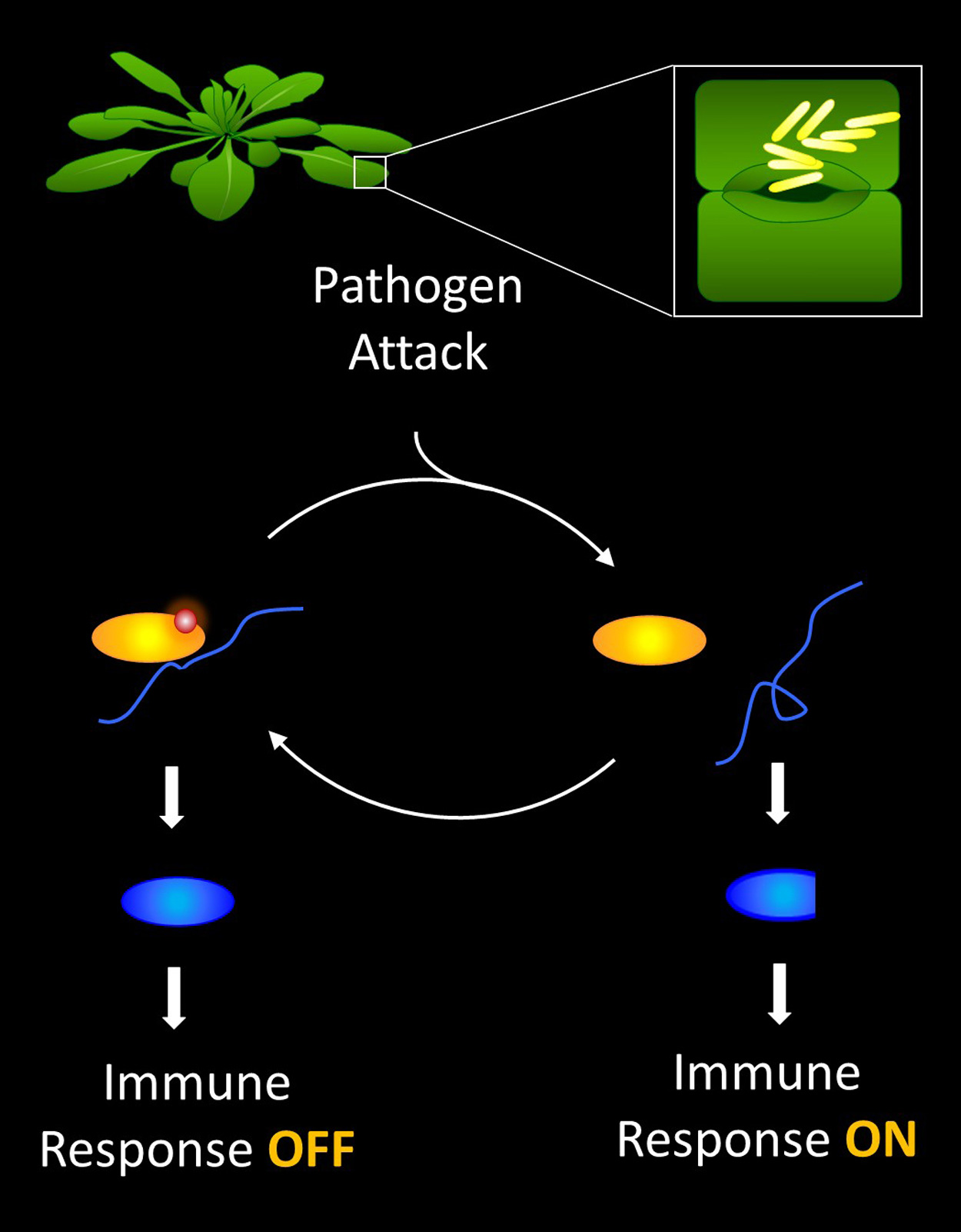Novel ‘On-off’ Switch Discovered in Plant Defenses
Protective mechanism paves the way to improved plant disease resistance and food stability
July 28, 2020
By Mario Aguilera

A new report describes the discovery of an “on-off” switch used in plant defenses.
To ensure survival, living organisms are equipped with defensive systems that detect threats and respond with effective counter measures.
Plants are known to mount quick defenses against a variety of threats—from attacking insects to invading pathogens. These intricate immune response mechanisms operate through a complex network that plant biologists have sought to untangle.
Crucial to these defenses is the timing and duration of immune responses. Humans are equipped with a strong and rapid inflammation response that is essential to ward off disease, but chronic and persistent inflammation can be harmful to our health. Similarly, plants feature defenses that are timed for rapid and effective responses against pathogens, yet tightly controlled to avoid threatening the host organism.
Keini Dressano, Alisa Huffaker and their colleagues at the University of California San Diego’s Division of Biological Sciences have discovered a critical “on-off” switch in the plant immune response system. As described July 20 in their report published in Nature Plants, they identified a new regulatory switching mechanism—an RNA-binding protein—that helps turn on immune responses a few minutes after attack. Hours later, the switch follows with a deactivation “off” signal to avoid self-inflicted damage to the plant.
“These findings have provided new insights into how the complex intricacies of plant immune responses are orchestrated to successfully fight off pathogens, and lay a path forward for improving plant disease resistance to ensure future food stability,” said Huffaker, an assistant professor in the Section of Cell and Developmental Biology.
The novel switch was found in Arabidopsis plants to control splicing of mRNA transcripts that encode signaling protein regulators of the plant immune response. To turn immune defenses on, the researchers say, a simple chemical modification of the RNA-binding protein reverses mRNA splicing that normally keeps immune responses deactivated. To turn the immune response back off, a second chemical modification of the RNA-binding protein returns mRNA splicing to “normal,” and the immune response is back to being held in check.
“This work went beyond simply identifying a new regulator of plant immunity,” said Huffaker, of the detailed mechanisms uncovered. “We discovered specific chemical modifications that control regulatory function, transcriptional targets of the regulator, differential splicing of the targets and precise effects of splicing on both target function and overall plant immune responses and disease resistance.”
The study’s full list of authors includes: Keini Dressano (post-doctoral scholar), Philipp Weckwerth (former post-doctoral scholar), Elly Poretsky (graduate student), Yohei Takahashi (assistant project scientist), Carleen Villarreal (former undergraduate researcher), Zhouxin Shen (staff research associate), Julian Schroeder (distinguished professor), Steven Briggs (distinguished professor) and Alisa Huffaker (assistant professor).
The research was funded by a National Science Foundation (NSF) CAREER Award (1943591), a Hellman Foundation Fellowship, UC San Diego start-up funds, a Ciências sem Fronteiras/CNPq fellowship (200260/2015‐4), the Cell and Molecular Genetics (CMG) Training Program at UC San Diego and an NSF award (1546899).
